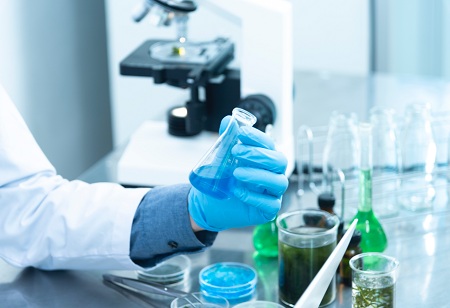Richa Singh | Friday, 20 October 2023

Continuous manufacturing (CM) is a modern manufacturing trend. Industries ranging from paper to petrochemicals and automobiles are embracing continuous manufacturing to improve economies and revenues. The highly regulated natures of the pharmaceutical business, as well as the market’s low risk-taking attitude, are the two key issues limiting pharmaceutical industries' application of revolutionary manufacturing processes. However, increased competition and rising demand for sophisticated and new medications have forced pharmaceutical producers to reevaluate their manufacturing techniques. Given the business benefits given by CM, the pharmaceutical sector is growing more open to this technology. The pharmaceutical business can profit from CM technology in several ways.
Enhanced Efficiency and Reduced Costs One of the most notable advantages of continuous production is its ability to greatly improve efficiency while simultaneously lowering costs. Traditional batch manufacturing involves several steps, each with its own set of equipment, operators, and time constraints. These phases frequently involve significant downtime and cleaning between batches, resulting in inefficiencies.
Continuous manufacturing, on the other hand, streamlines the process by merging several stages into a single, continuous flow. This means that as one batch is being manufactured, the next is already being planned. There is no need to halt and restart production processes, saving time and money. The advantages of increased efficiency go beyond simply saving time. Because operations can be closely monitored and changed in real time, continuous production lowers the demand for additional raw materials and resources. This not only decreases the environmental impact of pharmaceutical production but also leads to long-term economic savings. Furthermore, the capacity to keep a steady flow of production allows for more predictable scheduling, which reduces the need for excess inventory and warehousing. It's a win-win situation for both pharmaceutical corporations and customers, because the savings may be passed on to patients in the form of more affordable prescriptions. For Instance, implementing advanced robotic automation technologies in the industrial industry has resulted in increased efficiency and significant cost savings. Businesses can make items more reliably and at a lower total cost by substituting manual labour with precision robots capable of completing repetitive and complex tasks. These robots can operate nonstop around the clock, eliminating downtime and increasing output. They also have sensors and software that can detect and correct problems in real time, reducing the need for expensive rework or quality control processes. Furthermore, these systems can be configured to react to changing production demands, improving resource use even further. Overall, the implementation of advanced robotic automation has improved operational efficiency while also saving money by lowering labour costs, decreasing errors, and streamlining manufacturing processes.
Quality Control and Regulatory Compliance Maintaining the highest quality control and regulatory compliance requirements is critical in the pharmaceutical industry. Continuous production can assist in more successfully and consistently attaining this goal. In traditional batch manufacturing, the final product's quality is determined by sampling and testing of individual batches. This strategy may result in batch variances, thereby affecting product quality. Continuous manufacturing, on the other hand, enables real-time monitoring and correction, ensuring quality throughout the whole production process. These results in fewer deviations, less rework, and, ultimately, improved product consistency. Furthermore, regulatory bodies such as the FDA are increasingly supportive of continuous manufacturing, recognizing its potential to improve product quality and increase safety. Companies that use continuous manufacturing procedures are more likely to meet and exceed these changing regulatory criteria. The real-time data collecting and analytics capabilities of continuous production can also aid in the rapid identification of quality issues. Early discovery can result in quick corrective actions, avoiding costly recalls and providing a safer and more trustworthy pharmaceutical supply chain. For Example, A pharmaceutical organization must test and analyze the chemical composition, purity, and stability of a new medication on a frequent basis during the manufacturing process. This quality control method includes strict testing protocols to ensure that the product fulfills the quality requirements stated. The results of these tests are subsequently documented and submitted to regulatory authorities to establish conformity with the applicable legislation. "The adoption of continuous manufacturing is a strategic imperative for the pharma sector. It's all about agility and efficiency, and companies that embrace it will lead the way in the industry." Says John Chen VP of Operations, Global Pharma Solutions.
Sustainability and Environmental Impact Sustainability is a crucial factor for companies globally, particularly pharmaceuticals, in an era of increased environmental consciousness. Continuous manufacturing has the potential to reduce the environmental effect of pharmaceutical production. As previously stated, reducing raw material and resource waste has a substantial impact on sustainability. Furthermore, continuous manufacturing frequently necessitates the use of smaller equipment and facilities, resulting in lower energy usage and a smaller physical footprint. These variables contribute to lower greenhouse gas emissions and a more ecologically responsible pharmaceutical manufacturing process. Furthermore, because it provides for exact control and optimization, continuous production might permit the use of greener solvents and processes. As a result, more ecologically friendly medications may be developed. Adopting continuous production is the future of pharmaceutical manufacturing. Because of its efficiency, cost-effectiveness, and potential to improve quality control, it is an appealing option for pharmaceutical businesses. Its adaptability and innovation potential position it to adapt to the ever-changing landscape of drug development. Finally, its environmental benefits are in line with the increased emphasis on environmentally friendly operations. The transition from batch to continuous manufacturing is fraught with difficulties, such as the requirement for upgraded infrastructure and a mental shift. However, the long-term rewards, in terms of both economic success and society effect, make it a worthwhile move to contemplate. As the pharmaceutical industry evolves, implementing continuous production is a step toward a more promising, efficient, and sustainable future.